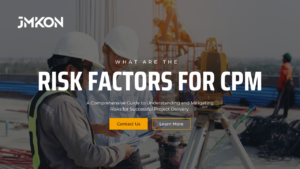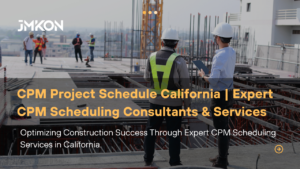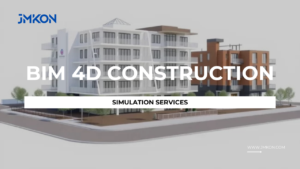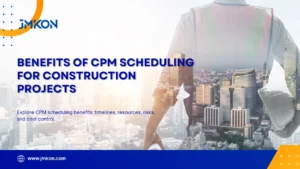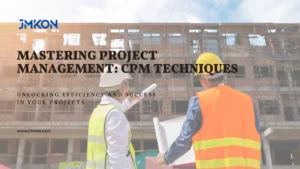A huge 70% of construction projects face delays. Many of these delays come from poor CPM risk management. The Critical Path Method (CPM) is a key project management tool. It finds the critical tasks that decide a project’s minimum time to finish.
Knowing the risks of CPM is key for good project management. It helps avoid delays. So, managing CPM risk is a big deal for construction managers.
To finish projects on time and within budget, good CPM risk management is vital. It means spotting risks early and acting to reduce them. This way, construction managers can make sure their projects are done well, with little delay and no big cost surprises.
CPM Risk Factors
CPM is a detailed project management method that needs careful planning and action. It has many benefits but also risks. Construction managers must know these risks to make their projects succeed.
Good CPM risk management means spotting risks, figuring out their chance and effect. This way, managers can keep their projects on track and within budget.
Understanding CPM in Modern Construction Management
Construction management uses many techniques to finish projects on time and within budget. One key method is the Critical Path Method (CPM). It’s vital for CPM risk management. CPM helps find the most important tasks needed to finish a project.
In construction management, CPM helps find the critical path. It shows the earliest start and end times for tasks. It also calculates slack time. This helps managers plan better, manage risks, and finish projects on time. For more on CPM and construction management, email us at info@jmkon.com.
Key Principles of CPM
- Identifying the critical path to determine the minimum project duration
- Determining the earliest start and finish times for each task
- Calculating the slack time to manage resources and risks
By applying these principles, construction managers can manage projects well. They can reduce CPM risk management issues. This leads to successful project outcomes in construction management.
Common CPM Risk Factors in Construction Projects

Construction projects are complex and involve many risks, including CPM risk. This can greatly affect the project’s timeline and budget. It’s important to manage these risks well to ensure the project is completed successfully.
Some common CPM risk factors include resource allocation, time-related risks, and technical challenges. The availability of skilled labor, equipment, and materials is key to success. Delays in completing tasks can also impact the project’s duration and increase CPM risk.
Technical challenges, like software integration issues and data accuracy concerns, can also be a big problem. To deal with these, construction managers need to plan well, allocate resources wisely, and have good risk management strategies.
For more information on CPM risk factors and how to manage them, visit our website. Understanding and addressing these risks can help construction managers complete their projects successfully.
The Impact of Resource Allocation on CPM Success

Effective resource allocation is key for Critical Path Method (CPM) success in construction. It means planning, monitoring, and controlling resources well. This includes managing human resources like skilled labor and training, and material management like buying, storing, and managing inventory.
To make CPM work, consider these important factors:
- Human resource considerations: availability of skilled labor, training, and development
- Material management challenges: procurement, storage, and inventory management
- Equipment and technology factors: availability of equipment, maintenance, and upgrades
| Resource Allocation Factors | CPM Risk Management Strategies |
| Human Resource Considerations | Training and development programs |
| Material Management Challenges | Inventory management and procurement planning |
| Equipment and Technology Factors | Maintenance and upgrade scheduling |
Time-Related Risks in CPM Implementation

Effective project management is key in construction. Time-related risks can greatly affect a project’s success. CPM risk is a big factor that can extend project duration, leading to delays and extra costs. Delays in task completion can be due to many reasons like not enough resources, technical issues, and outside risks.
To tackle these risks, understanding the project schedule well is vital. It’s important to spot time-related risks early. This means making a detailed project timeline, finding the critical path, and figuring out slack time. With this knowledge, project managers can plan to avoid delays and keep tasks on schedule, reducing risk.
Some effective strategies for managing time-related risks include:
- Regularly check and update the project schedule
- Find and fix possible bottlenecks and delays
- Have backup plans for unexpected delays
Technical Challenges and CPM Risk Management
Managing risks in construction projects is key. It helps avoid problems that can affect the project’s timeline, budget, and quality. Technical challenges are a big part of this. They include issues with software, data accuracy, and system compatibility.
Environmental and External Risk Factors
Environmental and external risk factors are key in construction project success. Weather, government rules, and community views are examples. Weather can impact resources, worker safety, and work quality, leading to risk.
Changes in government rules can change project scope, timeline, and budget. This makes it vital to plan for these risks early. Community opposition can also affect a project’s social and environmental impact. It shows the need for good risk management.
To reduce these risks, construction managers can do several things. They can:
- Do detailed risk assessments to find environmental and external risks
- Make plans for when these risks happen
- Use monitoring and control to quickly spot and fix risks
Understanding and tackling these risks helps construction managers succeed. Visit our website to learn more about managing CPM risk and ensuring project success.
Financial Implications of CPM Risk
Managing CPM risk well is key to avoid big financial losses in construction projects. When a project’s budget goes over, it can cause huge financial problems. This shows how important it is to plan carefully and keep an eye on costs.
To stay safe, you need strong cost control and to check if the project is worth it financially. This helps make sure the project doesn’t lose money.
Here are some important steps to handle financial implications:
- Keep an eye on costs to stop going over budget
- Use cost control to make sure spending stays within budget
Expert Consultation Services
Effective CPM risk management starts with seeking expert advice. Our team has a lot of experience in project management. We offer valuable guidance on handling CPM risks.
Our expert construction consultation services offer many benefits:
- Improved project planning and management
- Effective risk management and mitigation
- Enhanced project monitoring and control
- Increased chances of project success
With our help in JMKON for construction project management, your project will be well-planned and successful. We’re committed to giving you the best solutions for CPM risk management. We’re excited to work with you.
Managing CPM risk factors is key for construction project success. Construction pros face many risks, from resource issues to financial ones. They must tackle these challenges to finish projects on time and within budget.
Our construction management firm helps clients manage these risks. We offer solutions to tackle project management challenges. Our team ensures your projects meet quality standards and are completed on time and within budget.
Contact us
Make a Call
- California: (213) 261-0452
- New York: (646) 564-5610
- Texas: (832) 301-0338
Address
- 105 West 125th #1408 New York, NY 10027
- 1942 W Gray St #1184 Houston, TX 77019
- 3680 Wilshire Blvd Ste P04 – 1138 Los Angeles, CA 9001
Send a Mail
- info@jmkon.com
What are the risk factors for CPM in construction?
CPM in construction faces risks like resource allocation and time-related issues. Technical challenges and external factors also play a role.
How does resource allocation impact CPM success?
Resource allocation is key to CPM success. It involves managing human resources, materials, and technology.
What are the time-related risks in CPM implementation?
Time-related risks include delays in task completion. This can extend the project timeline. Good time management is essential.
How do environmental and external risk factors impact CPM?
External risks include weather and government changes. Community opposition is another factor. Effective management is required.
How can expert consultation services help with CPM risk management?
Expert services offer advice on CPM risk management. They help with planning, risk management, and control.

